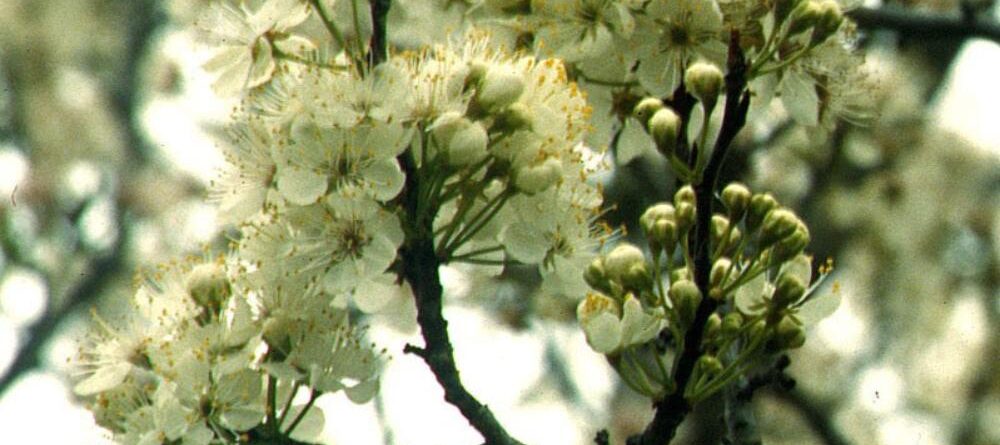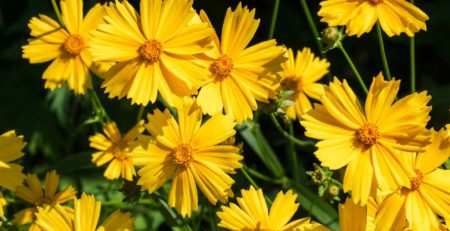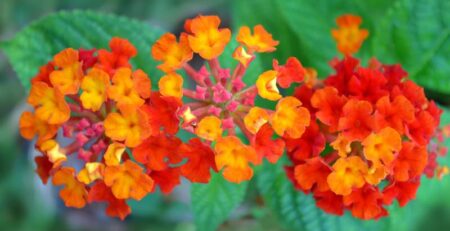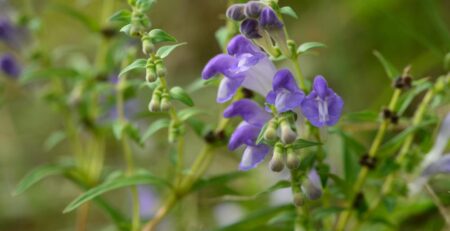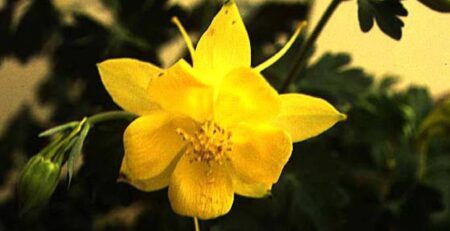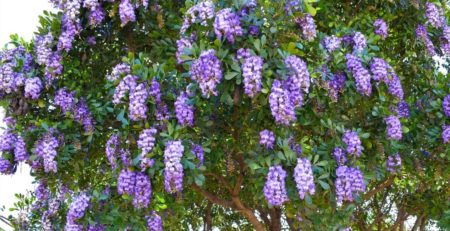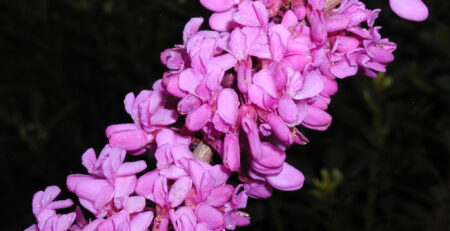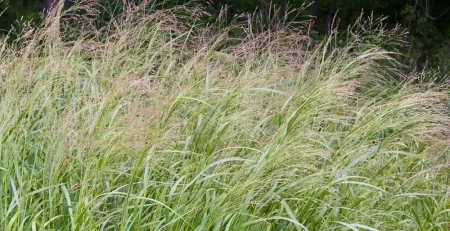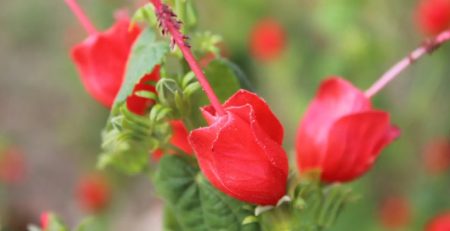Prunus mexicana “Mexican Plum”

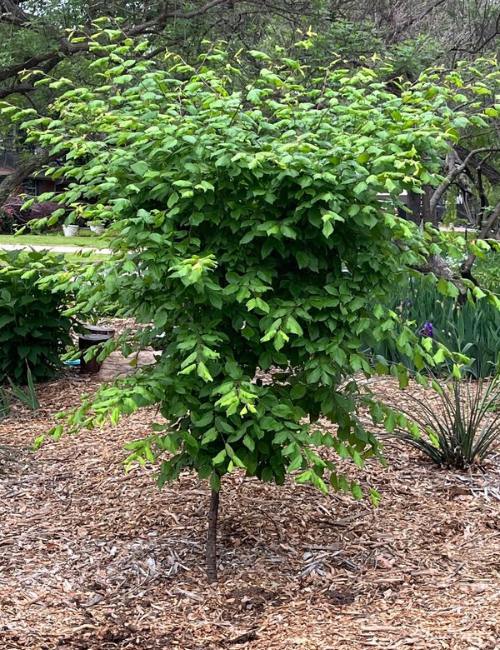
Botanical Name: Prunus mexicana
Common Name: Mexican Plum, Big Tree Plum
Category: Tree (Fruit)
Family: Rosaceae
Lifecycle: Perennial
USDA Symbol: PRME2
Hardiness Zone North: 7A
Hardiness Zone South: 9B
Sun Requirement: Full Sun (6+ hours of sun per day)
Sun Requirement (Alt): Partial Shade (2-4 hours of sun per day)
Water Requirement: Medium
Growth Rate: Moderate
Maintenance: Low
Plant Mature Height: 15 – 35 feet
Plant Mature Spread: 15 – 30 feet
Plant Spacing: 20 – 30 feet
Soil Preference: Adaptable
Soil pH Preference: Adaptable
Propagation: Grafting, Seed
Attracts: Bees, Birds, Butterflies, Moths
Resists: Rabbit, Squirrel, Deer, Disease
Tolerates: Freeze, Drought, Clay Soil, Shallow Rocky Soil, Dry Soil, Heat
Miscellaneous: Tolerates Poor Soil, Native Plant
Description: The Mexican Plum, botanically known as Prunus mexicana, is a versatile and captivating deciduous tree that’s heralded for its early spring show of white, aromatic blossoms that hint at soft sunlight shades at the center of each flower. Noted for its drought-resistance, once established, the tree boasts glossy, oval leaves that turn a delightful yellow in the fall, adding an array of color to any landscape. Its origin dates back to early civilization when indigenous settlements relied on its juicy, red to purple plums as a vital food source and fermenting agent. Because of the fruit’s appeal, the Mexican Plum is an excellent choice for attracting a variety of wildlife, including birds and pollinators, contributing to a lively garden ecosystem throughout its fruiting period in late summer to early fall. In terms of care, a sunny and well-drained location will ensure optimal growth, while supplementary watering in extreme drought and mulching to conserve soil moisture promote overall tree health. The Mexican Plum is a low-maintenance tree due to its resilience to common plant diseases and pests. However, bear in mind, its planting should be carefully planned as it doesn’t bode well with frequent transplants and has a moderate growth rate, which suggests patience is needed to see this tree in all its glory. With smaller green leaves in summer, it does not cast heavy shade, making it compatible with many understory plants. Though not particularly invasive, fallen fruit may sprout new trees, and the Mexican Plum’s thorny branches can make it a tricky specimen to prune. That said, if handled with care and given the conditions it thrives in, the Mexican Plum can be a beautiful and rewarding addition to home gardens and landscape designs.
Propagation & Planting: To propagate and plant a Mexican Plum, you should start with ripe fruits, ideally harvested directly from a healthy tree. After cleaning the fruit off the pit, let it dry for a few days before placing it in a bag with moist peat moss or vermiculite. The bag should then be stored in a refrigerator to stratify the seeds, a process that mimics winter dormancy and encourages germination. This should last for about two to three months, after which the seeds can be planted in indoor pots containing a high-quality soil mix; ensure they are covered with approximately an inch of soil. When the seedlings emerge and are strong enough to transplant, select a sunny or partially-shaded location with well-draining soil. Avoid waterlogged areas, as excessive moisture can cause root rot. The juvenile trees must be watered regularly, but the soil should not be soaked. Once planted, add mulch around the base to retain soil moisture and control weed growth, being sure to leave a gap around the trunk to prevent rot. Incorporate a balanced slow-release fertilizer in the early spring, following manufacturer’s instructions for best results. Regular pruning is advisable to maintain the tree’s health and maximize fruit production, particularly for branches that cross or rub against each other.
Plant Care: The Mexican Plum requires a full sun or partial shade exposure to grow, with a preference for a well-drained loamy or sandy soil. Water deeply and regularly during the first growing season to establish an extensive root system; reduce the frequency once established, yet keep in mind that it appreciates consistent moisture especially in hot, dry periods. Avoid waterlogging as it may lead to root rot. Annually in spring, feed the plant an all-purpose fertilizer before new growth begins, ensuring optimal health and vigor. Prune infrequently as this plant has a moderate growth rate and naturally attractive shape, but do undertake corrective pruning in late winter or early spring to remove dead, diseased or crossing branches. Implement suitable measures against common pest problems like aphids, borers, and beetles and diseases such as leaf spot, powdery mildew or canker. Though it’s a self-pollinating plant, increasing cross-pollination by introducing another compatible Prunus variety may enhance fruit production. Protect younger plants in winter with a thick layer of mulch around the root zone to conserve moisture and stabilize soil temperature. This established, the Mexican Plum would be a resilient, rewarding addition to your garden.
Fertilize: While fertilizing the Mexican Plum is generally not necessary, should you choose to feed, it is recommended to use a balanced slow-release granular fertilizer with an NPK value of 10-10-10. This ensures the plant receives an equal amount of Nitrogen (N), Phosphorus (P), and Potassium (K), all essential nutrients. During the growing season, fertilize once in early spring before new growth appears and again in late summer after the harvest. To apply, spread the fertilizer evenly around the base of the tree, extending out to the drip line and then water well. The fertilizer should not contact the trunk to avoid burn. Be sure to follow package instructions regarding amounts as over-fertilization can harm the plant. Regular soil tests will help determine proper nutrients levels and adjust fertilizing schedules and amounts if needed.
Prune: Pruning your Mexican Plum should be undertaken during the late winter or early spring while the tree is still dormant but just before new growth begins, which will promote robust and vigorous growth during the growing season. Timing is critical; avoid pruning in autumn or early winter as this can stimulate new growth that may be damaged by cold temperatures. Trim away dead, damaged or diseased branches first. Next, remove any crossbranching limbs to encourage better shape and health, focusing on maintaining the tree’s natural form. Light pruning can also help manage the tree size, if necessary. Always ensure to make your cuts at a 45-degree angle away from the bud to redirect the plant’s energy for maximum blossom and fruit development. For larger limbs, use a three-step approach to prevent bark tear: make an initial cut several inches from the trunk, followed by a second cut from the top and lastly a final cut flush with the trunk, preserving the branch collar. Avoid heavy pruning, as the Mexican Plum doesn’t respond well to severe cutbacks. Remember, proper tools, sharp and sterilized, are essential to make clean cuts and avoid infection.
Pest & Disease: The Mexican plum is susceptible to common pests like aphids, Japanese beetles, and plum curculio. Aphids, small green to yellow insects, cause discoloration and curling of the leaves. Neem oil or insecticidal soaps are effective against aphids. Japanese beetles, metallic blue-green bugs, damage the fruit and foliage. Use horticultural oil to reduce their concentration. For the brown to grayish plum curculio, a type of weevil responsible for fruit damage, a well-timed insecticide treatment after petal fall is essential. In terms of diseases, the tree can suffer from fungal infections like black knot, brown rot, and leaf spot. Black knot disease, recognized by its dark, wart-like protrusions on branches, can be handled by removing the infected branch. Brown rot, causing browning and shriveling of fruit and flowers, can be managed through fungicides and good sanitation practices. Leaf spot, leading to yellow or brown blotches on leaves, can be mitigated using copper sprays or sulfur dust, especially during periods of wet weather. Always remember, preventative care through proper planting, watering, pruning and fertilizing concessions stress and discourages pest invasion and disease development.

